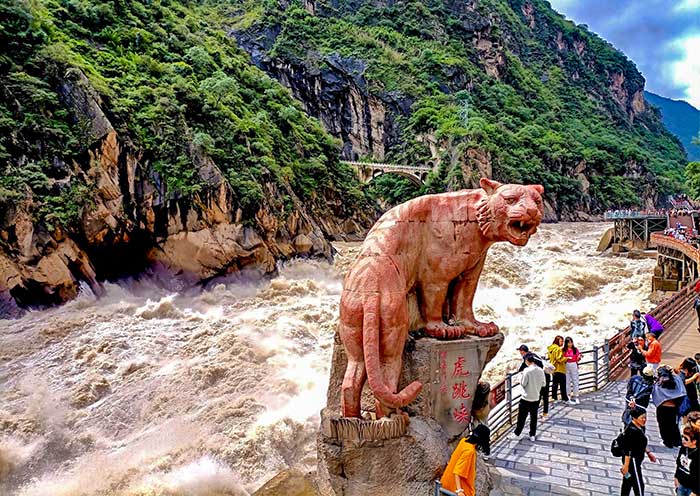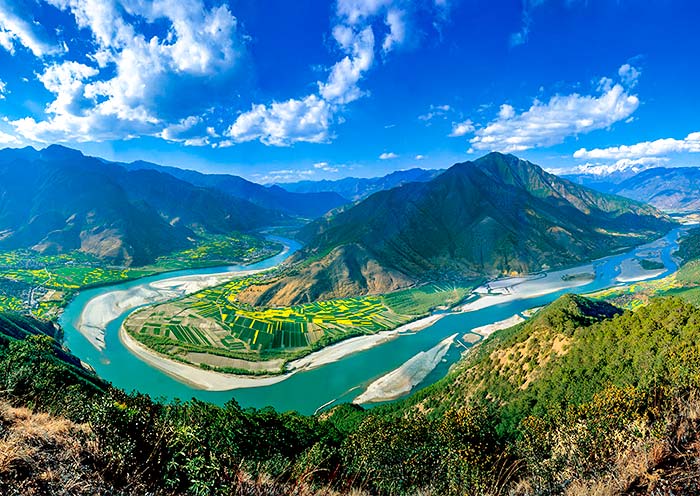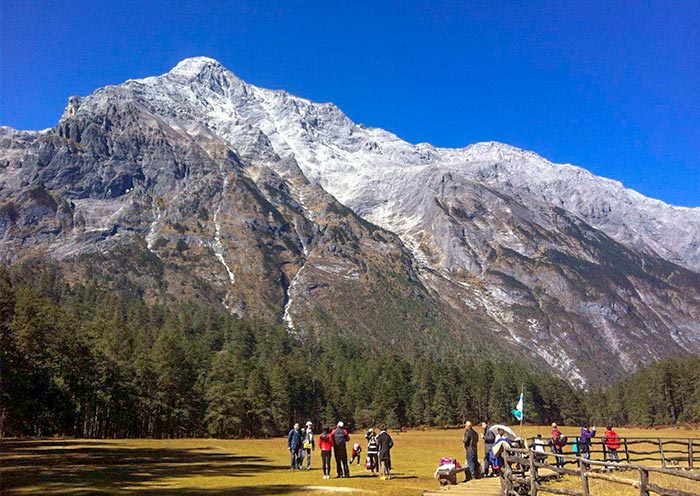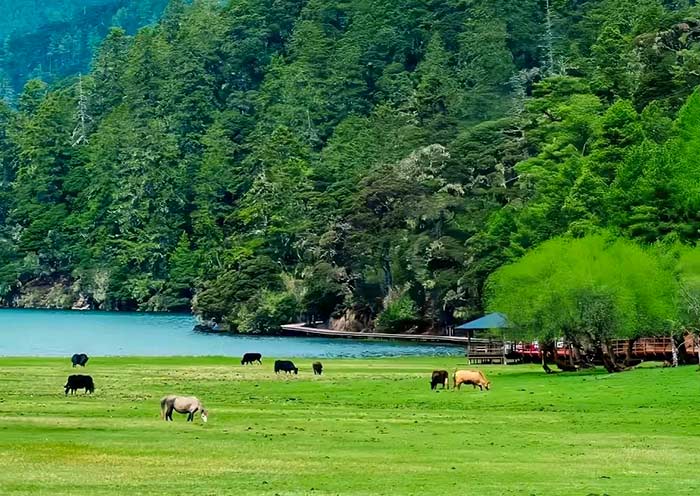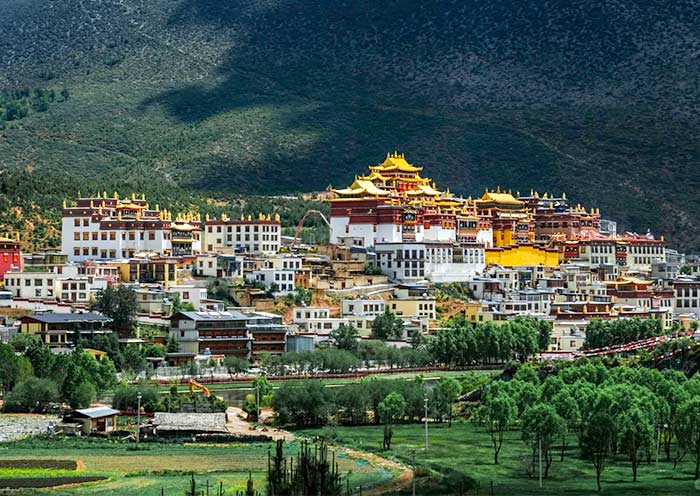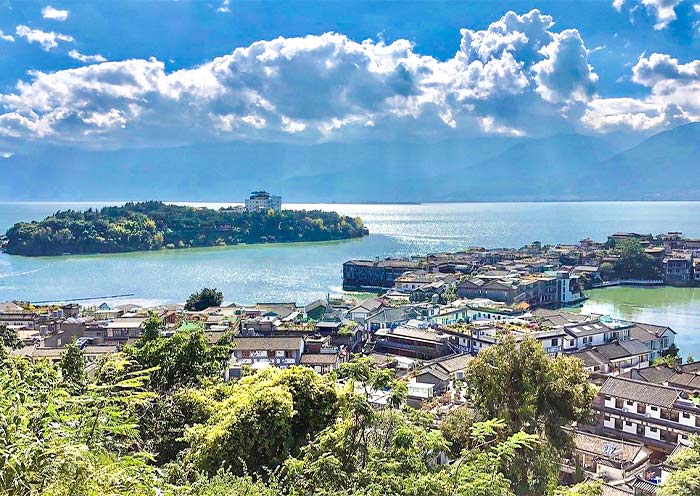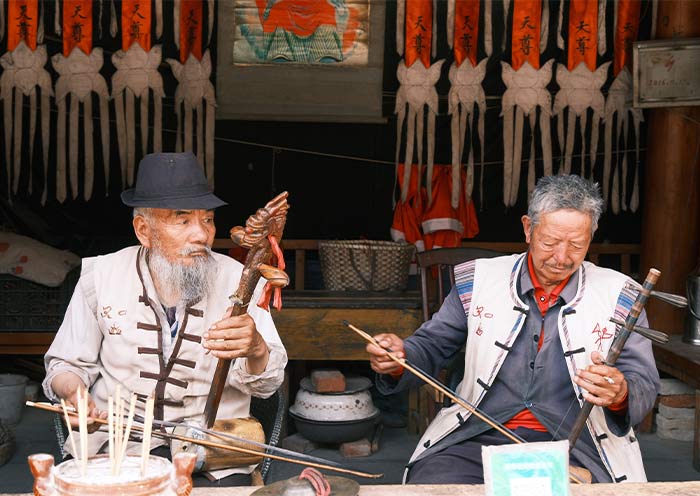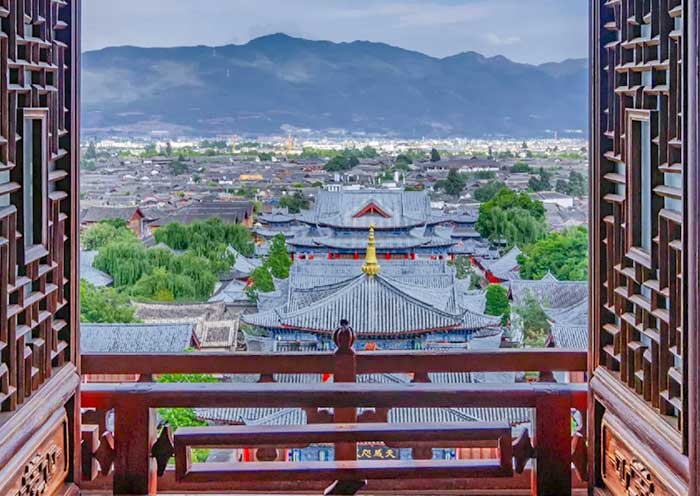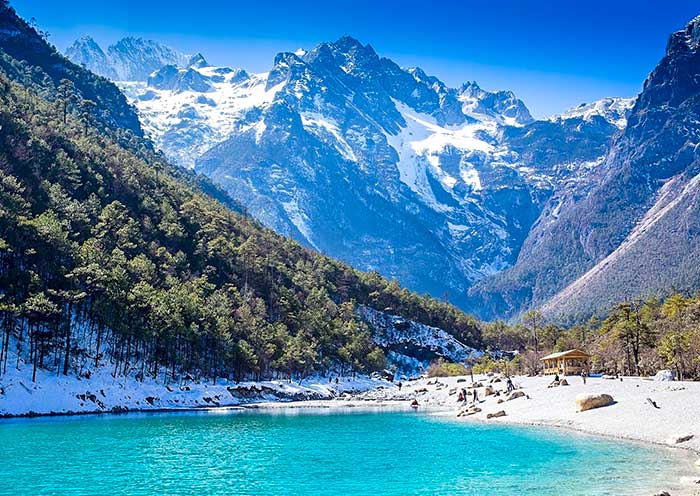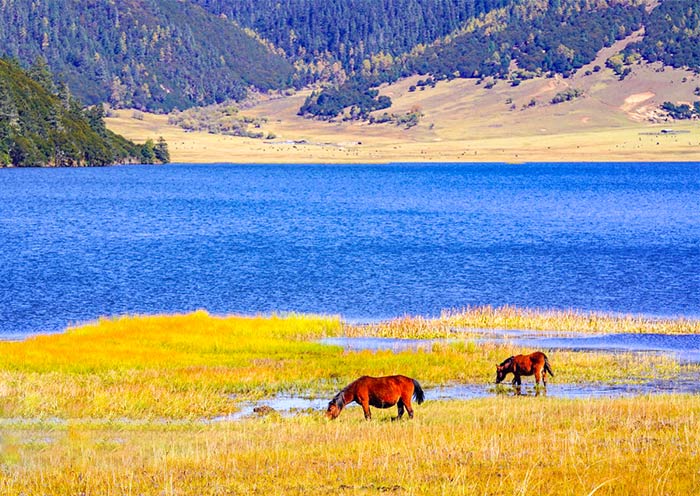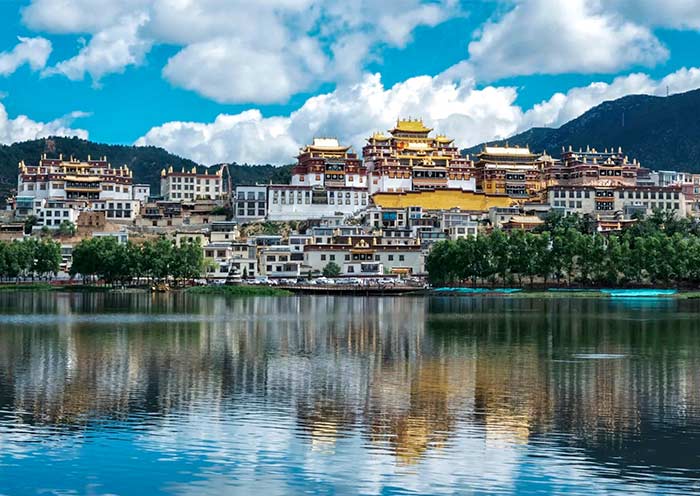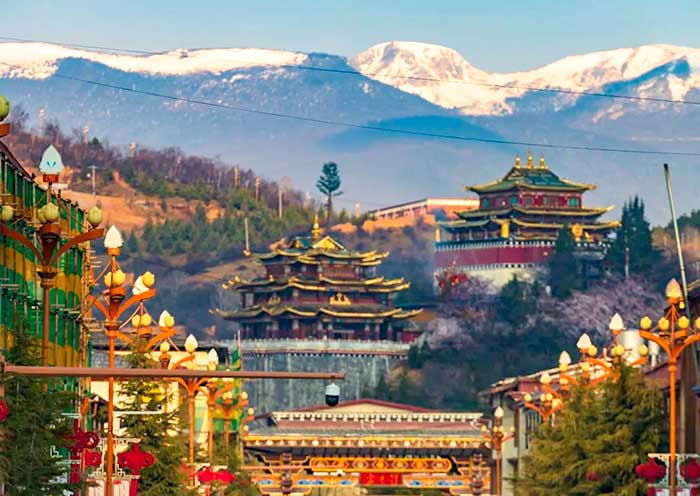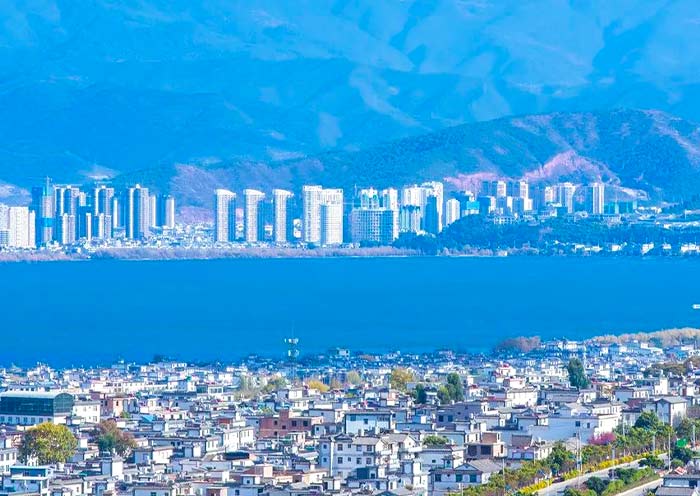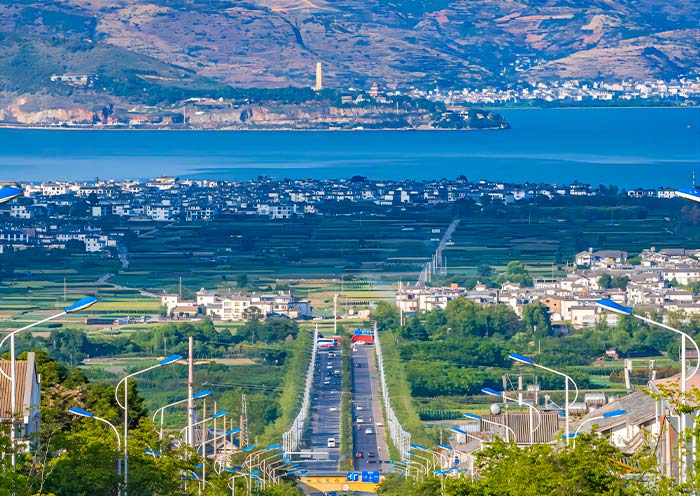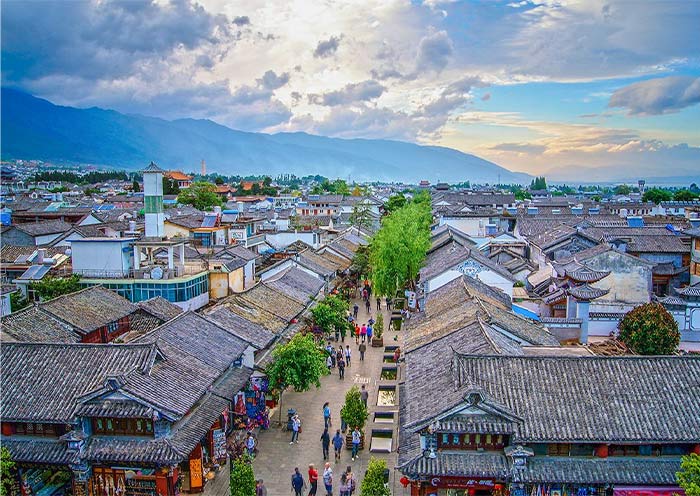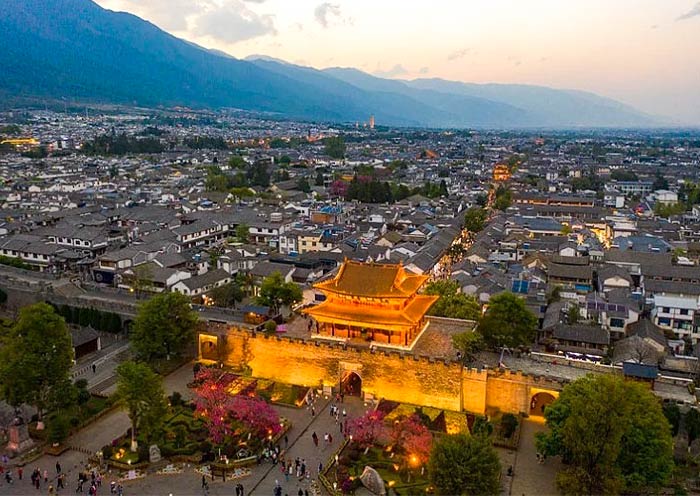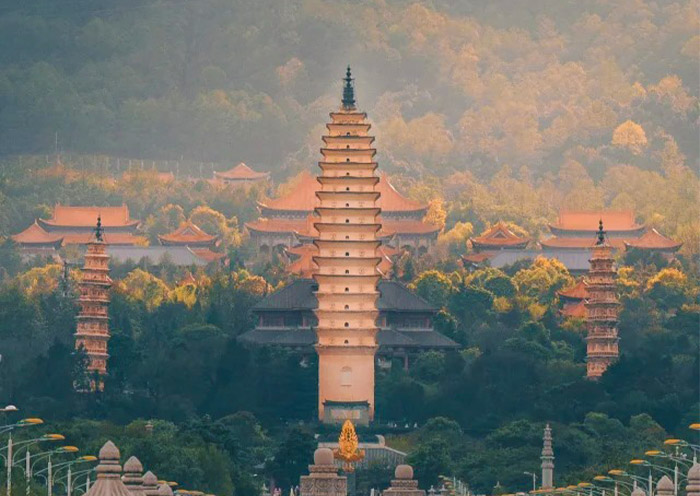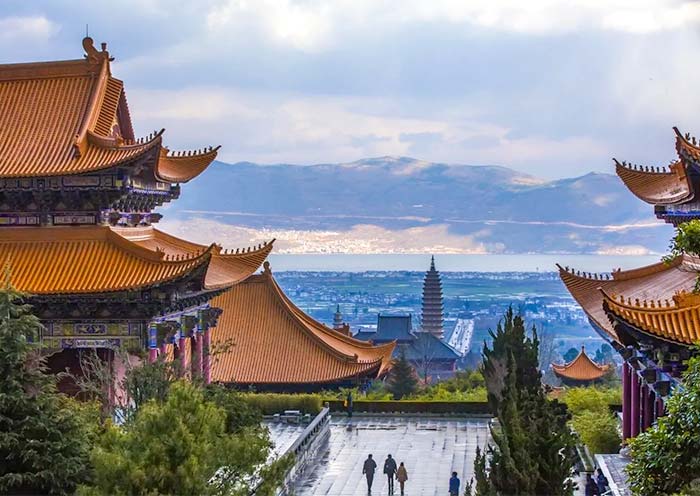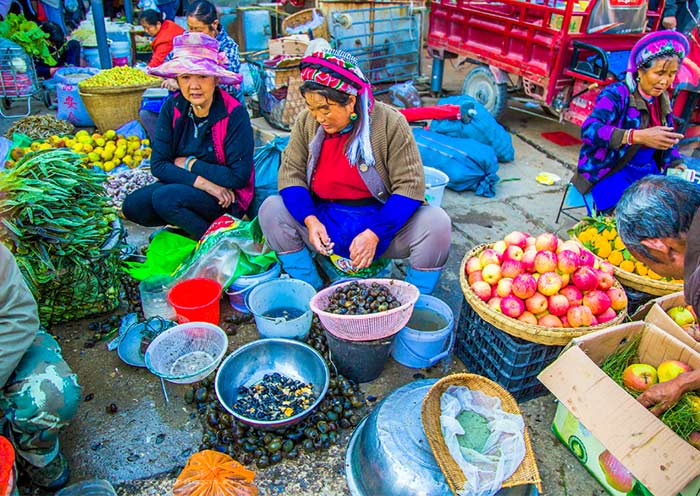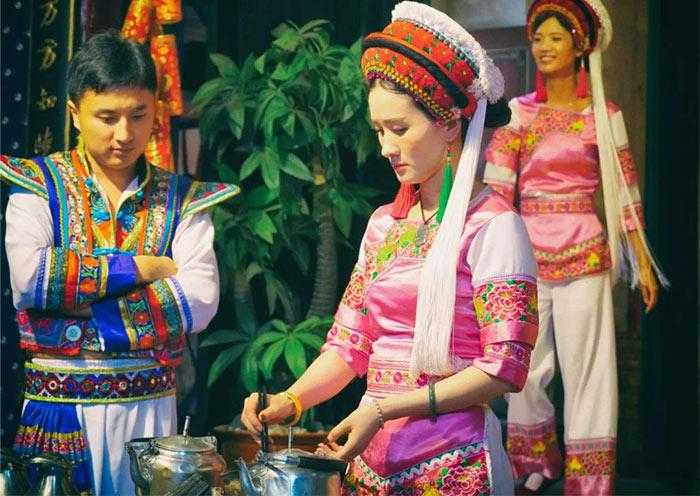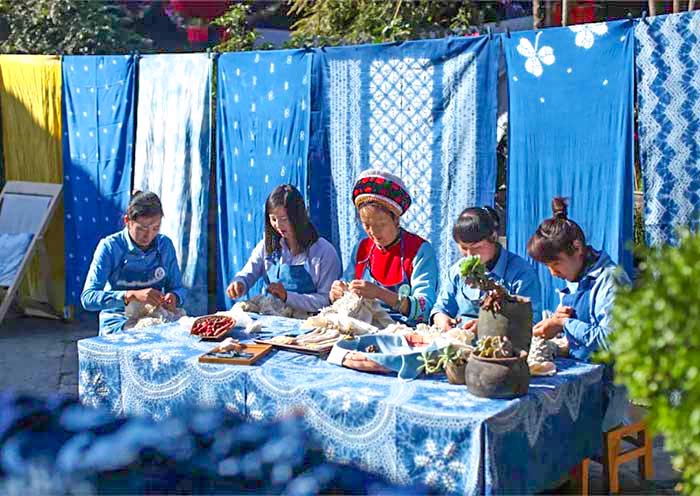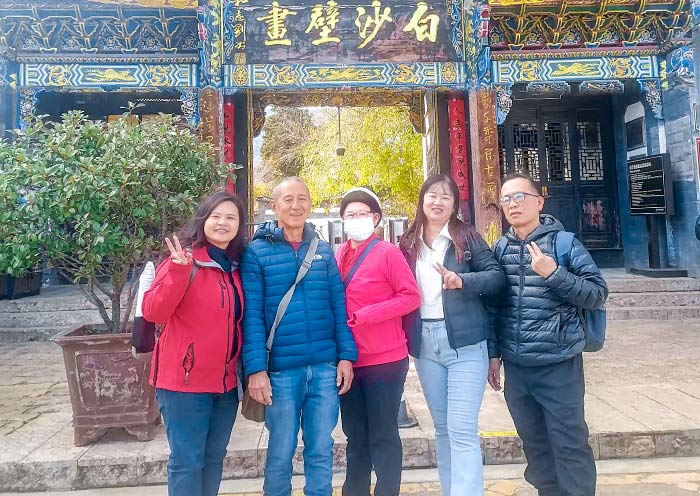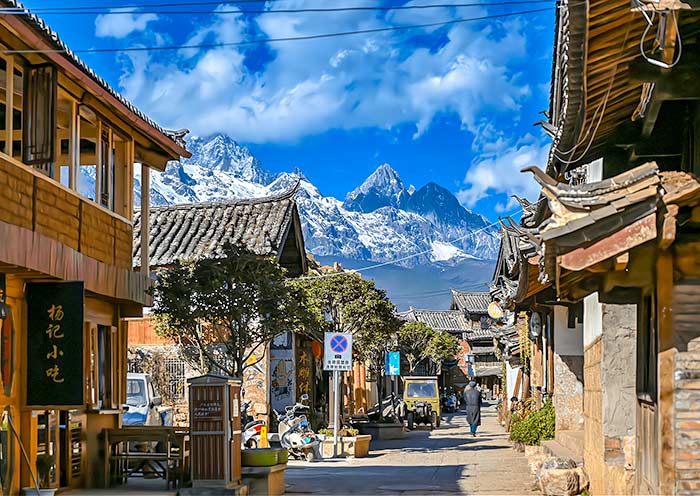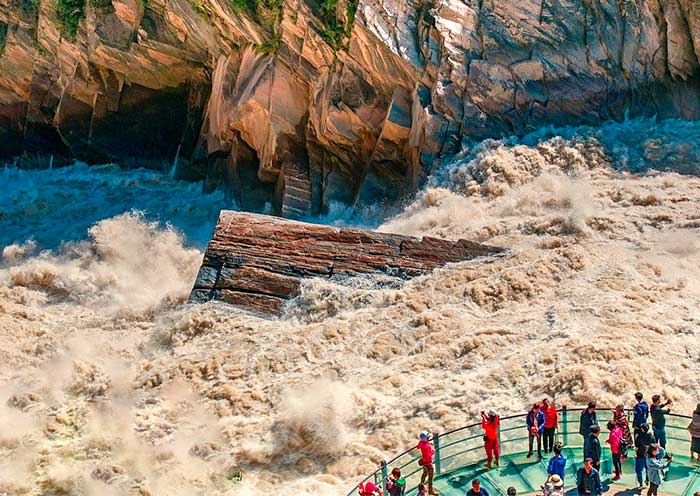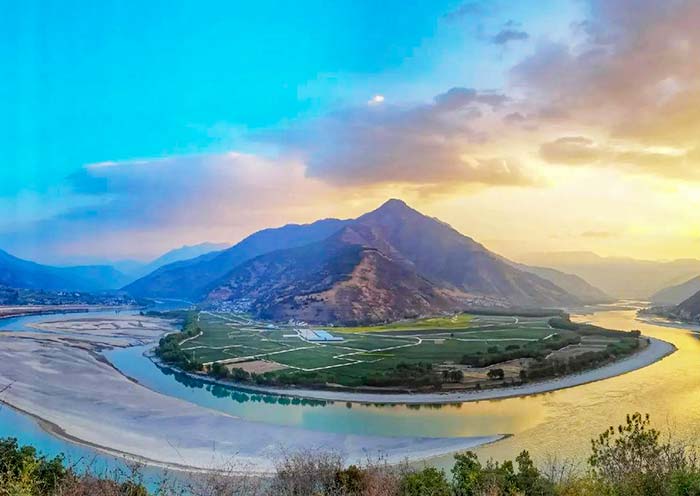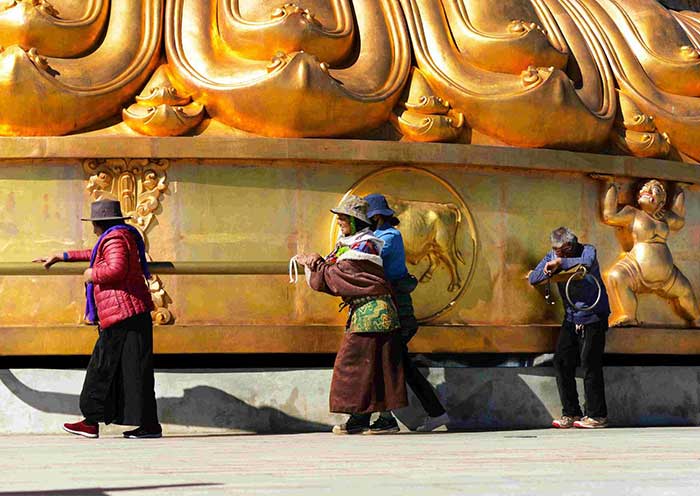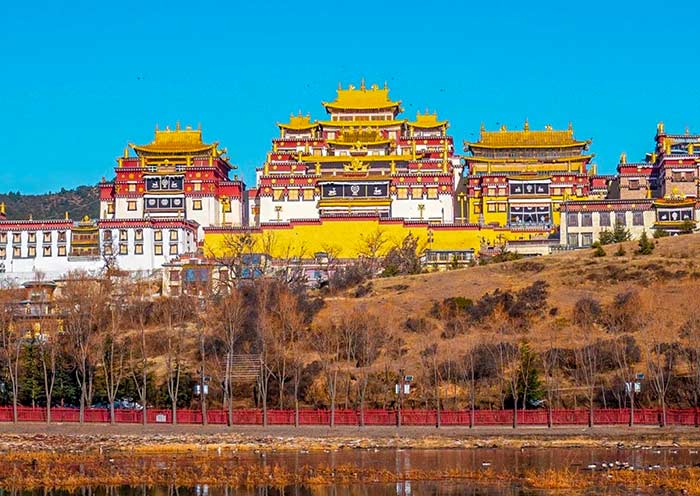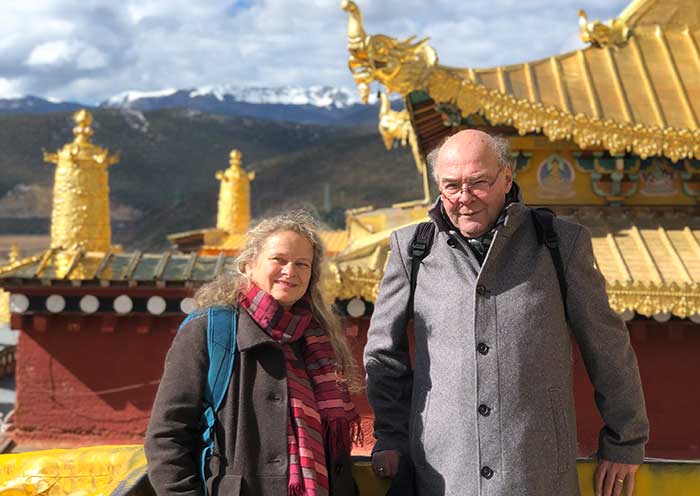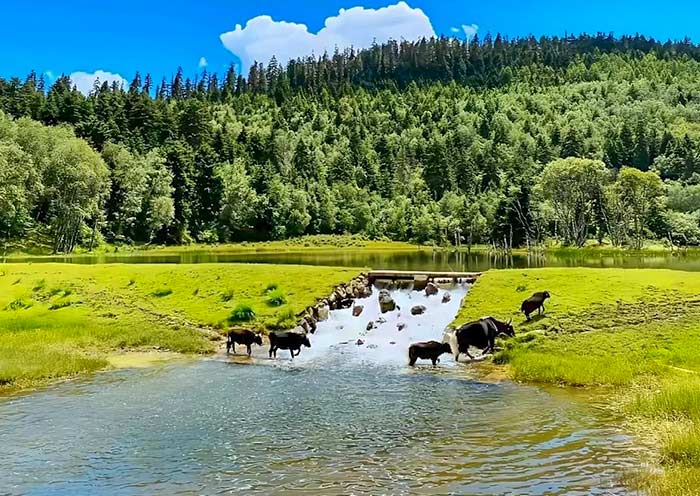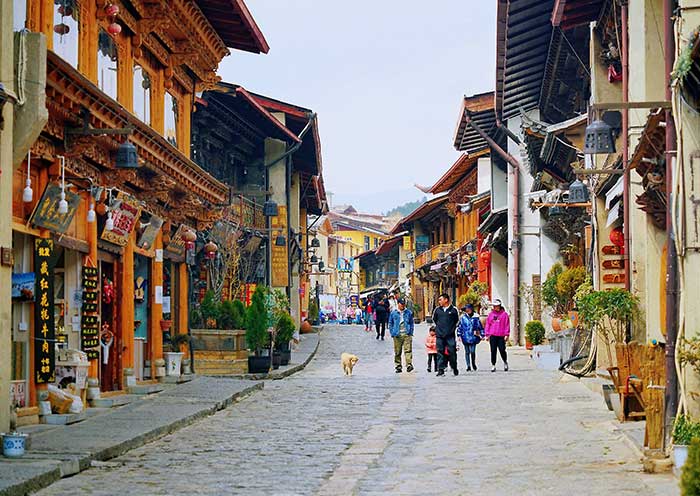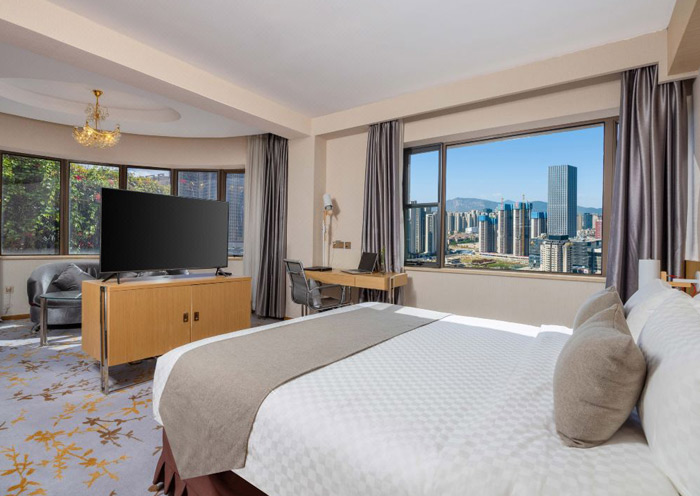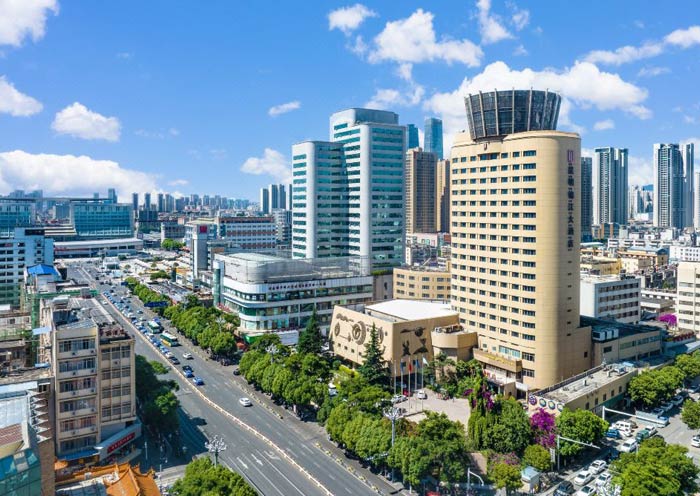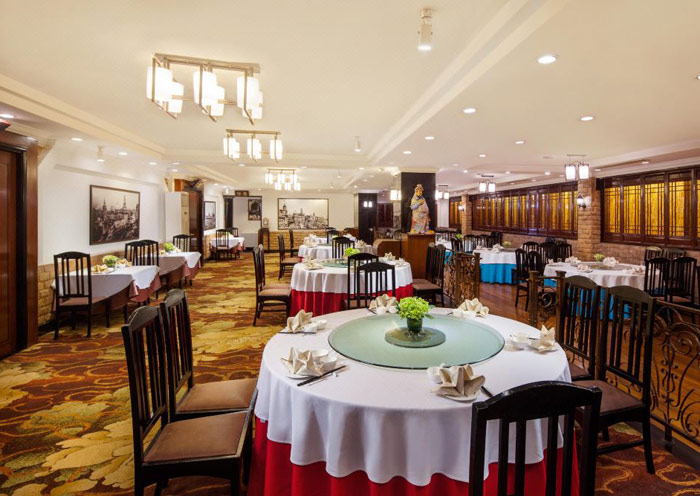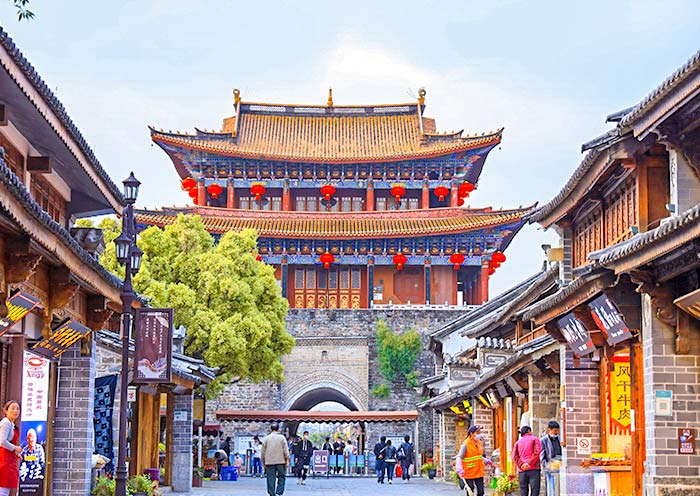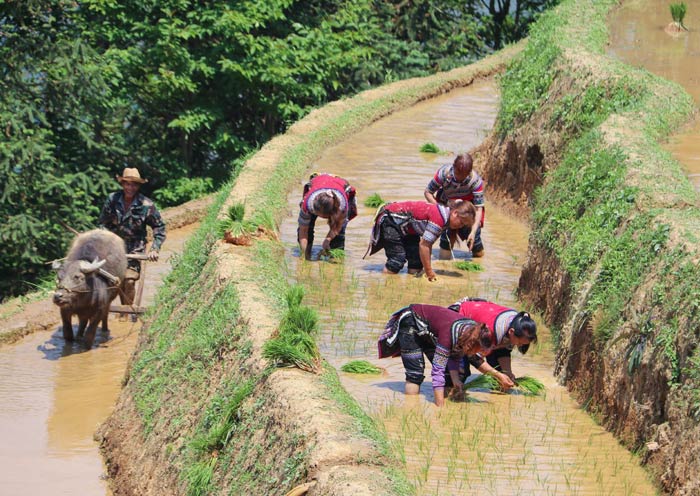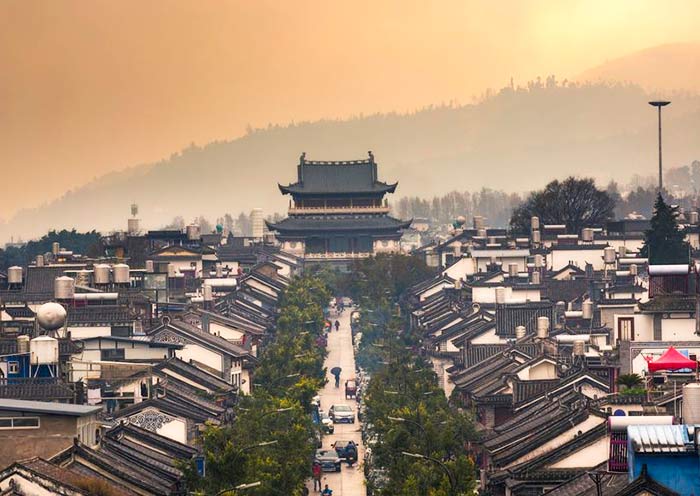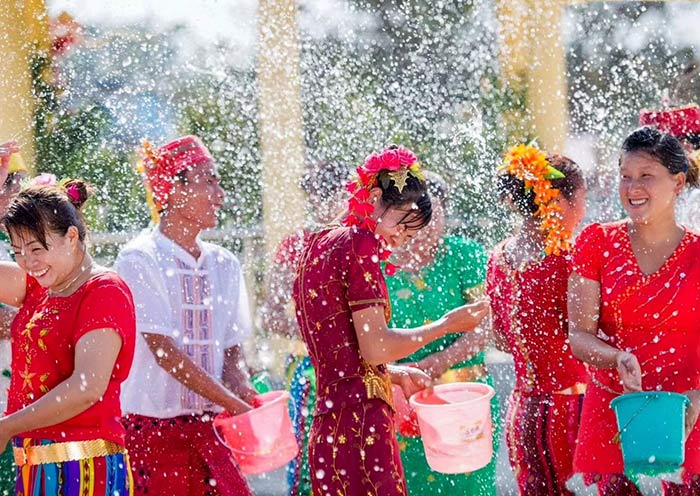Start your delightful day by immersing yourself in the lively Xizhou Morning Market (喜洲早市)! There's no better way to get under the skin of a place than by exploring its local market, here you can witness firsthand the local customs and mouth-watering dietary habits. This market has been a gathering spot for over a century where locals trade a wide array of goods - from farm-fresh produce and unique handicrafts to tantalizing local snacks. Yunnan, fondly known as the "Kingdom of Flora and Fauna," is a place where flowers and insects find their way into the local cuisine! Don't be surprised if you come across unfamiliar vegetables, fruits, and wild mushrooms. While you're there, don't miss your chance to try local favorites like Xizhou baba (a tasty stuffed pancake, savory or sweet) and a cup of freshly brewed Yunnan coffee.
After exploring the market, take a walking tour of Xizhou Ancient Town (喜洲古镇), acclaimed as the "Premier Town of the Bai people" due to its exceptionally the largest and best-preserved cluster of Bai ethnic group's traditional dwellings. Xizhou Village is ideal for those seeking a more authentic and tranquil cultural experience of Bai life and traditions. As you wander through the village, visit some of the old mansions and Bai residences like Yan Family Compound (严家大院), you'll notice the most distinctive features of Bai architecture known as "Three-Room and One-Screen Wall (三房一照壁)" and "Siheyuan/Courtyard (四合院)”. These homes are adorned with exquisite details such as flying eaves, ornately carved wooden doors and beautifully painted walls typical of Bai aesthetics. Don't miss the "Three Courses of Tea" ceremony (三道茶), a Bai cultural practice you must experience. This tea ceremony, which transitions from bitter to sweet to an aftertaste, encapsulates the philosophy of "embraces hardship, values the sweetness that follows struggles, and reflects on the profound aftertastes that life experiences leave behind". In addition, Xizhou is surrounded by vast wheat fields, creating a striking contrast against the grey-and-white tones of the Bai minority dwellings. This harmonious coexistence with nature provides a healing, wonderful feeling. The beautiful scenery, especially in spring and autumn, draws tourists to appreciate Xizhou's charms.
Next, make your way to Zhoucheng Village, which is just a short drive from Xizhou. Zhoucheng Village (周城), is often referred to as the “Hometown of Bai Embroidery ”. It is Bai people village, famous for its traditional tie-dye art (扎染), which has been preserved and passed down through generations. The Bai tie-dye technique has been listed as a National Intangible Cultural Heritage. Explore workshops within the village that showcase exquisite Bai embroidery. These pieces often depict traditional motifs such as lotus flowers, fish, and birds, which carry significant cultural symbolism. Engage with the local craftsmen and women, many of whom have inherited their skills from generations. If you're lucky, you may witness live demonstrations of Bai embroidery and tie-dye techniques. Optional Activity: If interested, participate in a hands-on workshop and craft your own tie-dye fabric under the guidance of expert artisans.
Later, continue driving to Lijiang (about 140 kilometers, around 2 hours). Lijiang (丽江), nestled under the breathtaking Jade Dragon Snow Mountain, forms a beautiful and peaceful link between Shangri-La to the north and Dali to the south. A UNESCO World Heritage site named "Old Town of Lijiang", it's not only a living ancient town complex, encompassing Dayan, Shuhe, and Baisha, but also the heartland of the Naxi ethnic group, with about 74% of the population being Naxi. A visit to Lijiang allows you to enjoy endless snow-capped mountain views, appreciate the charming old town, experience the rich Naxi culture, and unwind in its peaceful atmosphere.
This afternoon, you will have some time to explore Lijiang Old Town (丽江古城), also known as Dayan Old Town. With over 800 years of history, Lijiang Old Town was once a bustling hub for trade along the famous "Old Tea Horse Caravan Trail". The town resembles a labyrinth, characterized by its numerous cobbled streets, traditional wooden houses with upturned eaves, ancient bridges, and an intricate network of waterways. If time permits (optional), you'll visit the Mu Palace (木府), a sprawling complex located in the heart of Lijiang Old Town, often referred to as the “Forbidden City of the South”. It offers a captivating glimpse into the grandeur of Naxi royalty, showcasing rich Naxi culture and the fascinating history of the Mu family. You'll also discover why Lijiang Old Town, unlike the top three most famous ancient Chinese cities, has no city wall. Afterwards, walk to a higher vantage point to capture a breathtaking panoramic view of the sprawling old town, with snow-capped mountains forming a majestic backdrop in the distance. Take a short walk to Sifang Street (四方街), the most famous square. Here, you can explore Naxi handicrafts, souvenirs, and local specialties, and soak up the vibrant atmosphere of bustling bars with lively music spilling out onto the streets.
Afterward, let's head to Black Dragon Pond Park (黑龙潭公园), located at the northern edge of Lijiang Old Town. This picturesque location offers stunning views of the surrounding landscape, highlighted by the majestic Jade Dragon Snow Mountain. On clear days, the reflection of the snow-capped peak on the tranquil water of the Black Dragon Pool creates a breathtaking scene.
